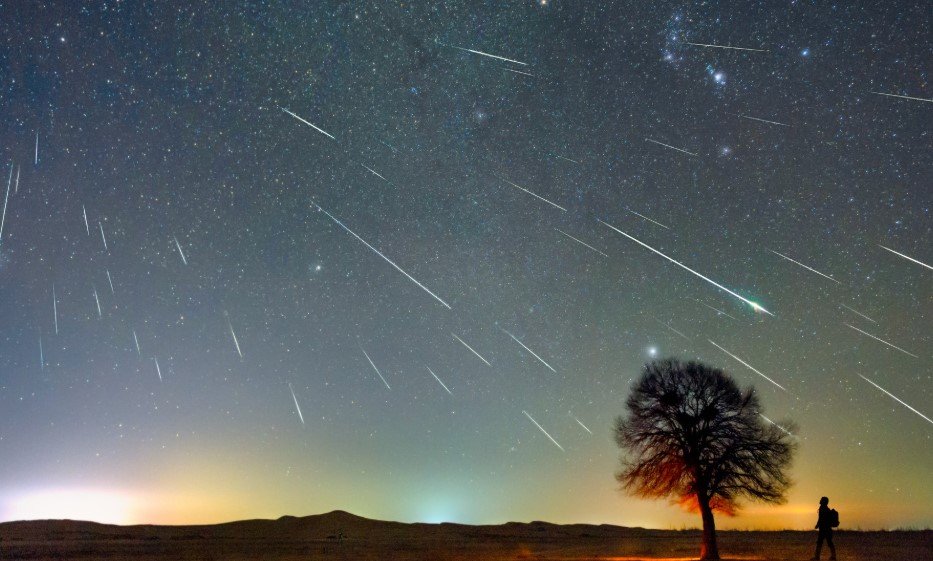The annual Perseid meteor shower is here again, dazzling skywatchers with streaks of light that seem to tear across the night canvas. But 2025 brings a twist: fewer shooting stars, thanks to a bright full moon that’s ready to steal some of the show.
Still, don’t pack up your binoculars just yet. The Perseids remain a celestial treat, with Venus and Jupiter making a rare close appearance in the night sky, adding sparkle to an already magical event.
When and Where to Catch the Perseids
The peak of the Perseid shower falls over the nights of August 11–12 and 12–13 this year, with sightings continuing until August 23. The Royal Observatory Greenwich’s Finn Burridge points out these dates as prime for skywatchers eager to catch meteors dashing across the heavens.
NASA’s Bill Cooke, head of the Meteoroid Environments Office, warns that the bright August full moon will wash out many faint meteors. “Instead of the usual 40 to 50 meteors per hour, people can expect to see about 10 to 20 or even fewer,” he says.

So timing is everything. The best hours to look are late at night, after the moon has set or dipped low enough to minimize its glare. That means patience and a cozy spot away from city lights.
Meteor expert Robert Lunsford of the American Meteor Society adds that you can start watching as early as 10 pm local time. “Look anywhere but at the Moon,” he advises, since the lunar brightness is the biggest obstacle.
Where to Watch
Any dark spot away from urban glow will do, really. Open fields, hilltops, or quiet countryside offer the best viewing conditions. If you’re lucky enough to be near the coast, the horizon over water can provide a stunning backdrop.
Even city dwellers aren’t entirely out of luck—though light pollution will dim the show, keeping to parks or rooftops might still reveal some meteors.
Just lie back, give your eyes about 20 minutes to adjust to the dark, and keep an eye near the northeast sky, where the Perseid radiant point lies in the constellation Perseus.
Venus and Jupiter’s Close Dance Adds Extra Sparkle
If meteors aren’t enough, this year’s celestial show includes a close approach of Venus and Jupiter. These two bright planets will appear to almost touch in the evening sky, a rare and beautiful sight that can be enjoyed alongside the meteor shower.
This conjunction will be visible shortly after sunset, making the evening sky a vibrant mix of shooting stars and planetary glow.
Why the Perseids Captivate Us Every Year
The Perseid meteor shower happens when Earth passes through the debris trail left by the Swift-Tuttle comet. These tiny bits of dust hit our atmosphere at speeds up to 60 kilometers per second, burning up and creating those bright trails we love to watch.
It’s an event that has fascinated humans for centuries — a natural fireworks display that reminds us how connected we are to the vast cosmos.
Tips for the Best Viewing Experience
-
Find a dark spot away from city lights.
-
Give your eyes time to adjust—about 20 minutes.
-
Dress comfortably; nights can get chilly.
-
Bring a reclining chair or blanket to lie back.
-
Avoid looking directly at the Moon.
-
Check weather forecasts to avoid clouds.
A Table Summarizing Key Viewing Details
| Aspect | Details |
|---|---|
| Peak Dates | August 11–12 and August 12–13, 2025 |
| Meteor Count | 10 to 20 meteors per hour (reduced) |
| Best Viewing Hours | After 10 pm local time, when moon is low |
| Viewing Location | Dark skies, away from city lights |
| Special Celestial Event | Venus-Jupiter conjunction after sunset |
Even with fewer meteors than usual, the Perseids offer a magical experience. Just imagine: bits of cosmic dust blazing across the sky while Venus and Jupiter shine side by side — a reminder that even in the darkest nights, the universe keeps putting on a show.
So, grab a blanket, find a cozy spot, and look up. Who knows? You might just catch a shooting star making a wish come true.
